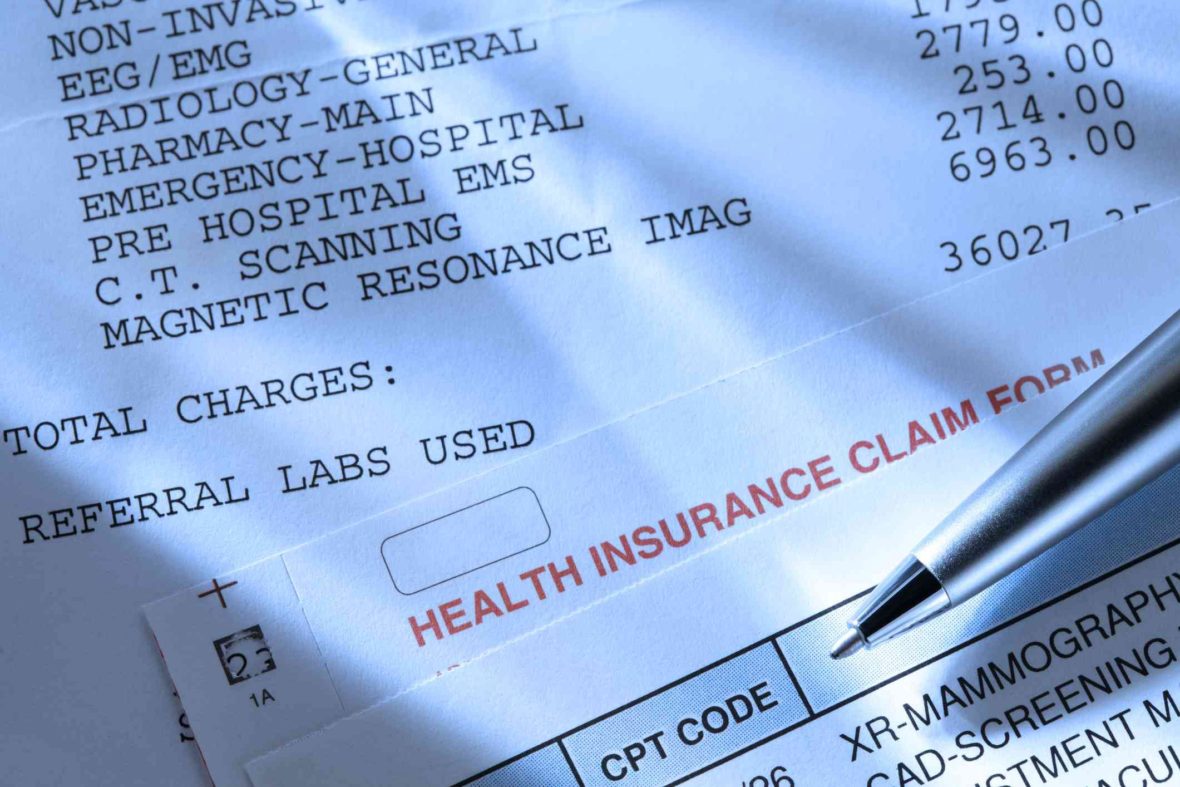Whether you’re a pharmacy owner or a practitioner, there’s no doubt that operating a pharmacy can be challenging in today’s market. Aside from declining reimbursement, PBM shenanigans, and controlling costs, ensuring a steady cash flow can be difficult. If your pharmacy bills to patients’ medical benefit, a big part of that difficulty lies in billing and all the processes that follow. As with many industries, getting paid or reimbursed for services and the steps to follow up can take up valuable time and resources.
You didn’t become involved in this industry to spend all your time on billing, but you’re a savvy businessperson who does what it takes. You will need to familiarize yourself with CPT codes for common medical procedures and services in order to populate billing and insurance claims forms. Where should you begin? Let’s dive into it.
What are Pharmacy CPT Codes?
CPT is short for Current Procedural Terminology. These are codes that healthcare professionals like physicians, nurses, and pharmacists use to get reimbursed for various medical services.
You can think of a CPT code for pharmacy professionals as shorthand for the procedures they encounter every day. So, for instance, instead of saying that a pharmacist administered medication therapy management face-to-face to a new patient, they can simply refer to it in their records as “CPT 99605”.
As you can see, CPT pharmacy codes are composed of five digits, either a number or a letter. However, most major CPT codes typically use numbers ranging from 00100 to 99499, which will be discussed in more detail later.
Using pharmacist billing codes allows pharmacy owners and personnel to indicate services rendered in a more succinct fashion. They also provide a common billing language that makes communication among several parties easy.
More importantly, a CPT pharmacy code is crucial for billing third parties or filing claims. Essentially, they describe the services rendered by the pharmacy professional and how much they should be paid or reimbursed for it. In other words, CPT codes are the language pharmacies must expertly use in order to contribute to their bottom line.
The CPT system was developed by the American Medical Association (AMA) and is maintained by the AMA CPT Editorial Panel. They meet regularly to either introduce new codes or revise existing ones. For example, the pharmacy CPT codes for 2022 included new entries to handle therapeutic remote monitoring. Pharmacies can now bill codes for the analysis of patient wearable devices.
There are three categories pharmacists can utilize as CPT pharmacy codes:
- Category I – These are the most common codes used by providers for reporting services. Because these are the most frequently used codes, this is the largest body of codes. These codes typically consist of five numbers.
- **Category II ** – This category involves performance management and may be utilized as a supplement to category I services. These codes are not linked to reimbursement and are designed to record information about patients, like patient history or whether they smoke. They are intended to help deliver more comprehensive healthcare. These typically consist of four numbers and the letter F.
- **Category III ** – This category is designated for temporary codes whose purpose is to report emerging or experimental technology, services, or procedures. These are considered “new or emerging ” and can remain Category III codes for no more than five years. These typically consist of four numbers and the letter T.
Common Types of Pharmacy CPT Codes
As you can see, CPT codes are categorized depending on the nature of the service they represent. For instance, a CPT code for medication therapy management differs from the HCPCS codes relating to the administration of injectable or oral drugs. To give you a better idea, here are some of the most common billing codes.
“Incident-to” Billing CPT Codes
“Incident-to” services are rendered in a location outside the pharmacy, such as a doctor’s office or a clinic. The care that is provided by the pharmacist must be done under the direction of and in conjunction with a physician or other approved practitioner.
This practitioner or clinic bills for the service, receives payment, and will subsequently compensate the pharmacist. “Incident-to” codes range from 99211 to 99215. Most pharmacists will be reimbursed under the 99211 code.
The ability for a pharmacist to be reimbursed for these services will vary from region to region with regards to payer requirements, and may require pharmacists to utilize their NPI number.
Medicare has nine specifications that must be fulfilled in order for an “incident-to” billing code to be reimbursed.
1. The patient must first be seen by the physician for an evaluation or a Medicare covered service.
2. The physician must have provided authorization for the service in the medical record.
3. The physician must continue to see the patient at a frequency that reflects his/her active participation in the management of the course of treatment.
4. The service provided by you, the pharmacist, is commonly furnished in a physician or Medicare Part B provider’s office or clinic.
5. The service must be medically appropriate to be given in the provider’s office or clinic.
6. Services provided by a pharmacist “incident to” the physician must be within the pharmacist’s scope of practice as dictated by the state’s Pharmacy Practice Act.
7. Services and supplies must be furnished in accordance with applicable State law. Any other state laws besides the Pharmacy Practice Act that affect your service must also be followed.
8. A physician or Medicare Part B-approved practitioner must be on the premises, but not necessarily in the room when incident-to services are performed. The supervising practitioner must be part of the organization.
9. The pharmacist providing the incident-to service must be an employee, leased or contracted to the physician or Medicare Part B-approved provider. The practice must have some legal control over the person and his or her services, and the person must represent an expense to the practice. Expenses may include salary or non-salary support such as an exam room, office supplies, staff support, etc.
CPT Codes for Medication Therapy Management (MTM)
CPT codes in the MTM category include face-to-face consultations to ensure patients are getting the right medication in the proper amount. These services are critical for the safe and effective use of prescribed medicines.
Reimbursement for medication therapy management may be done through the insurance plan sponsor. To qualify, the reimbursement request must include a review of the patient’s medical history and recommendations to enhance the patient’s healthcare. Individual states across the nation are increasingly defining and citing specific requirements which allow pharmacists to bill for medication therapy management for their patients who are on medicaid. The rules for MTM reimbursement through medicaid will vary from state to state.
There are three CPT codes for MTM. 99605 is for the first 15 minutes rendered for a new patient, while 99606 is for a follow-up MTM visit with an established patient . Any additional consultation time beyond the initial 15 minutes is billed using CPT code 99607 for a new or established patient.

CPT Codes for Pharmacy Chronic Care Management (CCM)
Chronic care management refers to services given to patients with two or more chronic conditions. These conditions are foreseen to last a year or longer. Generally, CCM codes are treated similarly to “incident-to” codes. In fact, pharmacists must meet the requirements of “incident-to” billing to qualify for CCM. Thus, pharmacists cannot bill for CCM services directly, but may be reimbursed similar to “incident-to” services billing. There are four CPT codes for CCM — 99490, 99487, 99489, and G0506.
CPT Codes for Diabetes Self-Management Training or Education (DSMT/E)
DSMT/E CPT codes are for pharmacists that conduct self-management training sessions for patients with diabetes. To qualify, the pharmacist must be a Certified Diabetes Educator (CDE) and the training or education provided must have recognition from the Association of Diabetes Care and Education Specialists (ADCES) or by the American Diabetes Association (ADA).
As per Medicare, the majority of this training must be administered in a group setting; however, if there is no availability, additional hours for individual sessions will be approved. There are only two CPT codes for DSMT/E — G0108 and G0109. The former covers individual training sessions, and the latter is for group classes.
CPT Codes for Transitional Care Management (TCM)
Transitional care management is a service given to patients who just came from an inpatient setting (like a hospital or inpatient rehabilitation facility) and is transitioning to home or community care. The goal is to help the patient adapt and deal with changes in medication or symptoms as they transition from inpatient to home or other outpatient care. This transitional service is allowed for 30 days where the day of discharge from the inpatient facility is considered day one.
Like CCM, pharmacists cannot bill for TCM services directly. Instead, they must do so as a qualified non-physician provider and with a licensed Medicare practitioner partner.
There are only two CPT codes for TCM — 99495 and 99496.
How DocStation Can Help Streamline Your Pharmacy Operations and billing CPT codes
DocStation is a value-based pharmacy platform that can help ease some of the burden in billing, revenue cycle management and claims resolutions.
While CPT codes do help streamline the billing process, they can still be a handful. Reading through notes and identifying the appropriate CPT codes can be time-consuming, which is why big hospitals and clinics have entire departments filled with specialists dedicated to this task.
The problem is that pharmacies, especially small ones, often don’t have this resource. This makes billing and claims lengthy and tedious for these businesses. Not only does it take precious time away from your pharmacy staff, but it also means you don’t get paid as quickly.
This is where DocStation can help. Our platform provides all the necessary tools to help you streamline the billing process, including CPT coding support, claims templates, and concierge claims management.
The result? You spend less time billing, coding, and reconciling your claims and more time serving clients and growing your pharmacy. DocStation’s billing solution puts more power and control in pharmacists’ hands so they can focus on what matters most: providing excellent patient care.
About DocStation
DocStation gets pharmacies paid for services. Pharmacies use DocStation to provide care, auto-bill medical claims, and participate in value-based programs with innovative health plans.
Get started today and discover how easy it is to get paid for the services you provide every day when you partner with DocStation.
Sources:
American Medical Association. “CPT Overview and Code Approval.” Accessed August 24, 2022.
The American Academy of Professional Coders. “What is CPT?” December 15, 2021. Accessed August 24, 2022.
National Council for Prescription Drug Programs. “Billing Guidance for Pharmacists’ Professional and Patient Care Services.” June 2018. Accessed August 24, 2022.
American Society of Health System Pharmacists. “Pharmacist Billing Using ‘incident-to’ Rules Non-Facility (physician based) Ambulatory Clinic.” March 2019. Accessed August 24, 2022.
Centers for Medicare and Medicaid Services. “Transitional Care Management Services.” July 2021. Accessed August 24, 2022.










